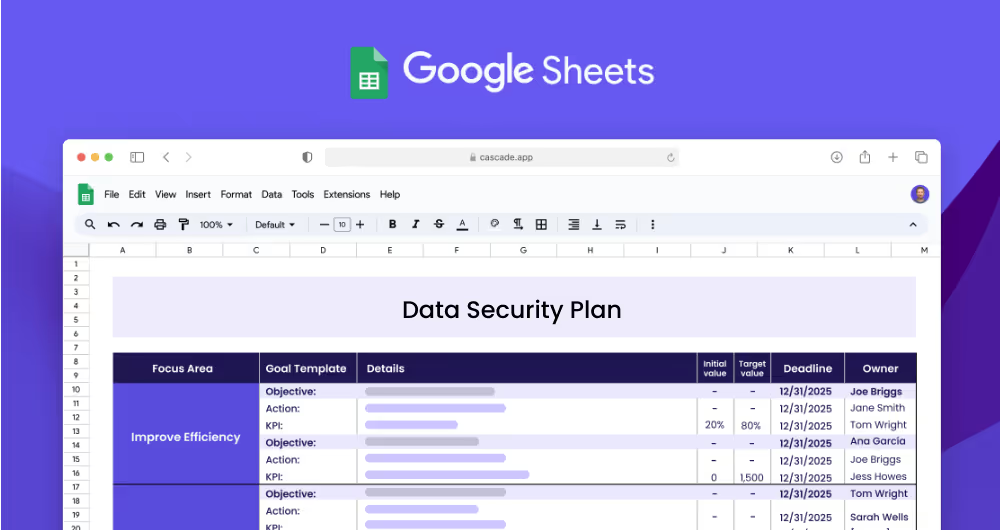A data security plan outlines the technical and organizational measures that an organization has adopted to protect the confidentiality and integrity of its data. It should cover all aspects of data security, from the physical security of the organization's networks, systems, and data storage facilities, to the security of the data itself. It should also address the security of the organization's personnel, as well as the security of its partners and third-party vendors.
Each focus area has its own objectives, projects, and KPIs to ensure that the strategy is comprehensive and effective.
The Data Security Plan template is designed for IT leaders, managers and teams of all sizes and industries, who want to create a comprehensive plan to manage their data security. It can be used to identify potential risks and vulnerabilities and create actionable steps to protect the data, whether on-premises, in the cloud, or a hybrid environment.
The first step to creating your data security plan is to define your focus areas. These are the areas of data security that you want to address. Examples of focus areas could include data security, data privacy, and data accessibility. Each focus area should have a clear set of objectives, actions, measures, and targets associated with it.
Once you have identified your focus areas, you can start to think about the objectives that could fall under each. Objectives are the goals that you want to achieve within each focus area. They should be specific, measurable, and achievable.
Examples of some objectives for the focus area of Data Security could be: Establish Security Policies, and Implement Security Controls.
Once you have identified your objectives, you should set measurable targets (KPIs) to tackle each one. KPIs are metrics that can be used to measure progress towards a specific objective. When setting KPIs, it is important to consider the initial value and the target value, as well as the unit of measurement.
An example of a KPI for the focus area of Data Security could be: Adoption rate of security policies.
Once your objectives and KPIs have been set, you can start to implement related projects to achieve the KPIs. Projects are the actionable steps that need to be taken to achieve the objectives associated with each focus area. They should be practical, feasible, and realistic.
An example of a project related to Data Security could be: Develop and implement security policies.
If you’re ready to accelerate your strategy and see faster results, consider using Cascade Strategy Execution Software. Unlike spreadsheets, which are often limiting and disjointed, Cascade provides a streamlined, integrated platform designed to help you track, manage, and execute your strategy effectively. Sign-up for free or book a demo with one of our strategy experts to get started today!


